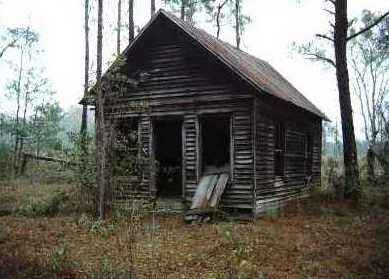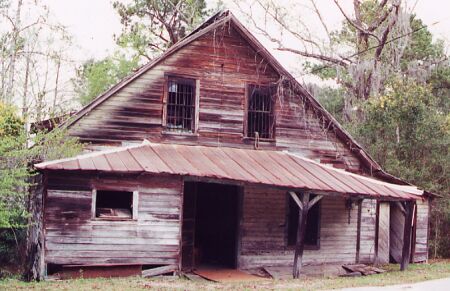| Burnt Fort Community (unincorporated county)

The Burnt Fort area was one of the first places to be settled in this
part of the state. Edmond Gray came to Georgia with a following of debtors
and outlaws. He was determined to settle the "Neutral" area that encompassed
the land between the Altamaha (Glynn Co.) and St. Johns Rivers (Florida).
In April 1755 Gray, and "Gray's Gang" arrived at a spot "30 miles up the
Great Satilly River" in an area known as New Hanover. They laid out a town
and set up homes and shops. This, of course, was illegal. The English were
unhappy that this rough lot was settling in disputed land, Spain was unhappy
to find out these renegade Englishmen had started a town, and the Creek
Indians were unhappy at this intrusion into their territory. Eventually,
after politics failed, the governor of Spanish-St. Augustine (now in
Florida) sent a troop of 30 men to expel Gray's Gang. In addition, English
commissioners were sent to evict Gray's Gang. Gray notified the townspeople, some of whom refused to leave. Upon
hearing of the Gang's refusal to comply with their orders, the English
destroyed the settlement. What buildings were left behind were the fort and
the trading post.
Gang. Gray notified the townspeople, some of whom refused to leave. Upon
hearing of the Gang's refusal to comply with their orders, the English
destroyed the settlement. What buildings were left behind were the fort and
the trading post.
For years afterwards the settlers used the fort as a refuge from Indian raids.
Eventually the trading post disappeared into the wilderness but ruins of the
fort were still visible in the 1800's. Sometime in the 1800's the fort was
burned. Some say Indians destroyed it.
At this time, the name New Hanover gave way to "Burnt Fort." Eventually
the area was opened for settlement. Trading with the Indians was not
uncommon.
Early settlers of the area include, but are not limited to, the
Studstills, Parrishes, Crawfords, Browns, Atkinsons,
Clarks, and Langs.
From Maine came settlers to operate a sawmill. For many years afterwards
the area became known as a logging settlement. Names common in the timber
industry of Burnt Fort included the Buies, Bedells, Browns,
Godleys,
Littlefields, and Harrells. Descendents of these families still live on in
the community of Burnt Fort.
 A
ferry crossing at Burnt Fort was in place until the 1920's. A bridge
eliminated the need for a ferry. In the 1950's, a new bridge was built when
Highway 252 was paved. A
ferry crossing at Burnt Fort was in place until the 1920's. A bridge
eliminated the need for a ferry. In the 1950's, a new bridge was built when
Highway 252 was paved.
The old Buie-Littlefield general store (ca. 1907) at Burnt Fort still
stands. It is only used for storage now.
Today, the sawmills are quiet. Gone are the bustling days of a
timber-town. Today families live their lives out in the Burnt Fort
community, but most rely on jobs outside of the area. Logging still goes on
but the trees are processed elsewhere. The area is still beautiful and a
pleasure to visit.
Few of the old buildings remain. Some that can still be seen include the
old Burnt Fort School, the Godley place, the Buie home, the Littlefield
homestead, and the Goodbread house. Burnt Fort Chapel, while quite beautiful
and built very similar to its predecessor, is relatively new. Unfortunately,
the 160+ year old Goodbread house, which lies in the little hamlet of
Midriver, is being torn down. I [Tara Fields] have a few photos taken this year (April of
1999) after the top floor was removed. There's a ghost story associated with
the Goodbread house. Supposedly, it harbors the ghost of Dr.
Eaton who was
murdered on the front porch! I wonder where he will go now? |